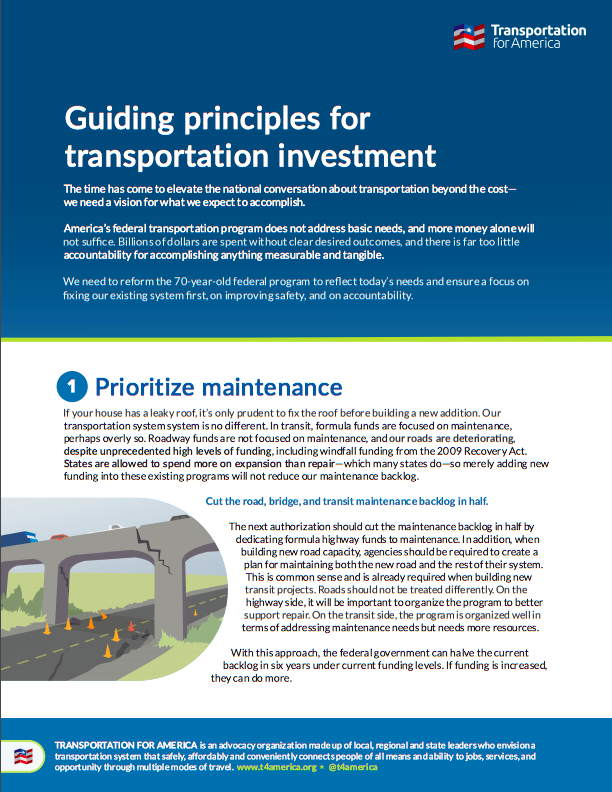Think FAST – the good, the bad and the ugly in Congress’ new five-year transportation bill
For the first time in a decade, Congress is on the cusp of passing a five-year transportation authorization bill that will carry us into the next decade. Though we await final floor votes and the President’s signature, it will almost certainly be approved in a matter of days. So how does the bill stack up against the pressing needs of our country? Here’s the good, the bad, and the ugly of the FAST Act.
House and Senate conference members reach agreement on five-year transportation authorization
Conferees from the House and Senate have reached agreement on a final transportation reauthorization that will tap Federal Reserve surplus funds and other accounting maneuvers to cover the bill’s full cost over five years.
Senate pivoting to yearly spending bill that increases TIGER but still cuts transit funds
While a few Senate members are focused on the conference committee deliberations on a new long-term transportation bill, the Senate committee that doles out transportation money each year has released their proposal for next year, and the news is mixed for several important transportation programs.
Without a good transportation network, employees can’t work, employers can’t employ
A core function of our transportation network is to give everyone access to economic opportunity by making sure they’re easily connected to jobs. T4America director James Corless is participating in a policy roundtable later this week discussing the challenge for employers and employees alike, how some companies are responding, and how we can do better.
How MPOs can save money and improve safety by adopting complete streets policies
As we continue to unpack the helpful material contained in our Innovative MPO guidebook, our fifth webinar in the series coming up on December 3rd will take a closer look at how metropolitan areas (MPOs) can actually reduce costs and improve safety for their residents by adopting complete streets policies and using those policies to help select projects.
With conference underway, how do the House and Senate bills stack up?
While the multi-year transportation bills passed by the House last week and the Senate back in July are fairly similar, there are still some notable differences between the two. With the conference committee getting underway to reconcile the bills, it’s worth looking at the similarities and differences.
USDOT proposes to remove restrictive design guidelines that make safer streets more difficult to build
The Federal Highway Administration (FHWA) took an encouraging and surprising step, proposing to ease federally-mandated design standards on many roads, making it dramatically easier for cities and communities of all sizes to design and build complete streets that are safer for everyone.
Where did the additional billions in new revenue come from for the House transportation bill?
In the early morning hours on Thursday during negotiations over the House transportation bill, Rep. Neugebauer presented a fairly surprising amendment that tapped billions from a to-date unmentioned Federal Reserve surplus account to help cover the cost of the bill.
House transportation bill uses tomorrow’s revenues to pay for yesterday’s policies
Following final consideration of the Surface Transportation Reauthorization and Reform Act (STRR) Act by the full House of Representatives, Transportation for America chairman John Robert Smith offered this statement:
While Congress punts on sustainable funding, local communities approve a slew of new transportation taxes on election day
In a striking contrast to the actions of Congress when it comes to transportation funding, a handful of local jurisdictions went to the ballot this week and approved new taxes for transportation investments.





